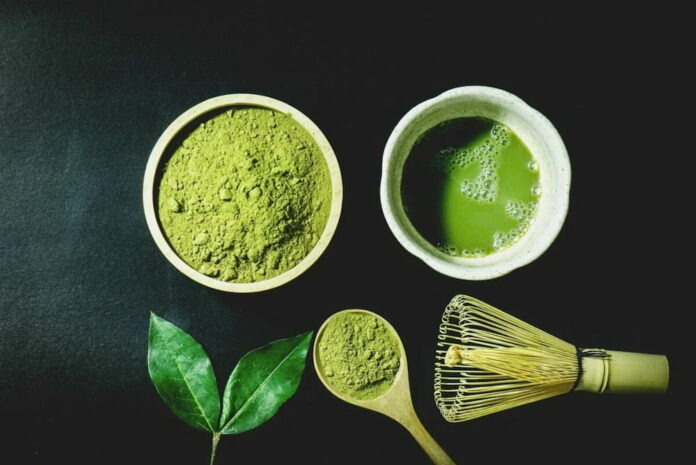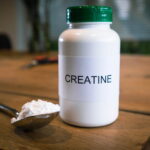Think of matcha as green tea turned up to eleven! Instead of steeping leaves and tossing them out, matcha is made by grinding whole green tea leaves into this super-fine, vibrant green powder. You whisk it right into hot water (or milk!), meaning you’re drinking the entire leaf. That’s why folks say you get way more of the good stuff – all those nutrients packed into the leaf. Originating in Japan centuries ago, it’s got this unique flavor: definitely earthy like green tea, but also surprisingly creamy and smooth. Fair warning though, that first sip can be a real surprise if you’re used to regular tea!
What does matcha actually taste like?
Okay, picture this: it’s rich, definitely creamy (especially in a latte!), and has this underlying bitterness that isn’t harsh – more like a pleasant edge. You get that classic “green,” grassy taste, but here’s the thing that makes matcha special: it often has this subtle sweetness and a deep, savory note called umami. Why? Because before harvest, the tea plants are shaded for weeks. This little trick boosts chlorophyll (hello, bright green color!) and amps up that complex, almost brothy flavor. The creaminess really shines when you mix it with milk.
How’s matcha different from my regular green tea?
It’s like comparing a gentle breeze to a focused gust of wind! Your typical green tea is light, maybe a bit floral or delicately vegetal. Matcha, because you’re consuming the whole powdered leaf, is way more intense and concentrated. Expect a bolder, earthier punch and a stronger bitterness (though the natural sweetness and umami balance it nicely). Some people absolutely love this robust flavor – it feels substantial. Others might find it a bit much at first if they’re expecting something milder. It’s definitely a more “in-your-face” tea experience.
Why does my matcha sometimes taste different? (Quality, Prep & Storage!)
Ah, the taste can shift depending on a few key things:
- The Good Stuff (aka Quality): Like most things, you get what you pay for. Top-shelf “ceremonial grade” matcha is smoother, sweeter, and less bitter. More affordable “culinary grade” can be sharper or more astringent – perfect for baking or lattes where you add sweetness, but maybe not ideal for sipping straight.
- How You Make It: This is huge! Use too much powder? Bitter city. Water too hot (scalding it)? Also bitter and harsh. Getting the right powder-to-water ratio (start with about 1 tsp to 2 oz water) and using water just off the boil (around 175°F / 80°C) makes all the difference for a smooth, balanced cup.
- Freshness is King: Matcha is like a vibrant, living powder. It fades fast! Light, air, and heat are its enemies. To keep that awesome flavor bright, stash it sealed tight in an airtight container, tucked away in a cool, dark cupboard (not the fridge unless you’re very careful about moisture). Fresh matcha is noticeably sweeter and more vibrant.
Did you find this helpful? Check out our other helpful articles on our website.
Read Also
- Why the Keto Diet Works for Some People—and Fails Dramatically for Others: An Ayurvedic Breakdown for Modern HealthcareThe keto diet has dominated weight-loss culture for years. For some people, it produces rapid fat loss, stable energy, and improved mental clarity. For others—especially those who gain weight easily—it leads to burnout, digestive distress, rebound weight gain, high cholesterol, and a metabolism that feels slower than before. Healthcare often frames this as a discipline… Read more: Why the Keto Diet Works for Some People—and Fails Dramatically for Others: An Ayurvedic Breakdown for Modern Healthcare
- How to Choose the Best Assisted Living Facility for SeniorsAre you looking for the right assisted living facility for a senior loved one? Choosing a place can feel overwhelming. There are many factors to consider, from care services to the environment. Safety, comfort, and social opportunities play important roles in daily life. Each senior has unique needs and preferences that must be met. Understanding… Read more: How to Choose the Best Assisted Living Facility for Seniors
- Burn Smart, Not Hard; Shape Burn: Clean Protein for Weight ManagementYou want to feel light, strong, and confident. You don’t want crash diets or fake promises. You need a plan that works with your body, not against it. That’s where Shape Burn comes in. You can burn fat without losing strength. You can eat better and stay full. You can manage weight in a way… Read more: Burn Smart, Not Hard; Shape Burn: Clean Protein for Weight Management
- Creatine Basics: How Much Is 5g, How Much Water You Need, and Whether Pills or Powder Work BetterIf you’ve ever walked into a supplement aisle or scrolled through fitness TikTok, you’ve probably seen people talking about creatine — usually with a shaker bottle in hand and promises of better workouts and faster gains. And honestly? They’re not wrong. Creatine is one of the most researched and effective supplements for muscle strength, recovery,… Read more: Creatine Basics: How Much Is 5g, How Much Water You Need, and Whether Pills or Powder Work Better
- Understanding Breast Cancer in Men: Key Facts and SymptomsBreast cancer is often thought of as a disease that only affects women. However, men can develop it too. Although it is less common, early detection and awareness are important. Read on to learn key facts, symptoms, and ways men can take action to protect their health. How Common Is Breast Cancer in Men? Breast… Read more: Understanding Breast Cancer in Men: Key Facts and Symptoms
- Raising Awareness: Breast Cancer Facts for Older MenBreast cancer does not affect only women, and many older men do not realize they are at risk. Because the signs can be easy to miss, many men learn about the disease only when it has progressed. Learning the basic facts now can help you stay aware and respond early. If you want to protect… Read more: Raising Awareness: Breast Cancer Facts for Older Men
- How Regular Exercise Transforms Senior Living for the BetterGetting older is something everyone experiences, but how we age can be greatly influenced by the choices we make. One of the best ways for seniors to stay healthy, happy, and independent is through regular exercise. Staying active isn’t just about fitness-it can improve nearly every part of life. From building strength and energy to… Read more: How Regular Exercise Transforms Senior Living for the Better
- The Importance of Mammograms and Early Detection for Aging WomenAs women age, taking care of their health becomes even more important. One key part of women’s health is regular breast screenings. Mammograms are a simple but powerful tool that can detect breast changes early. Early detection can save lives by finding problems before they become serious. For aging women, staying informed and proactive about… Read more: The Importance of Mammograms and Early Detection for Aging Women









